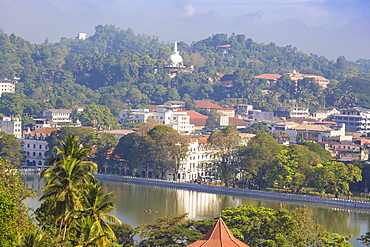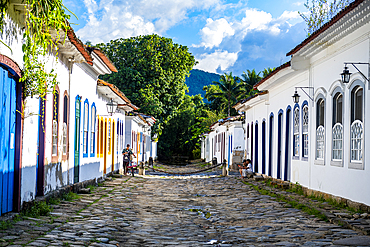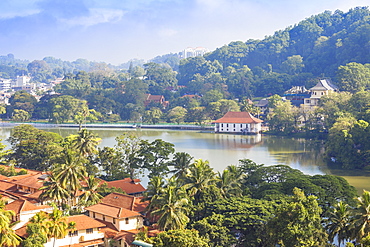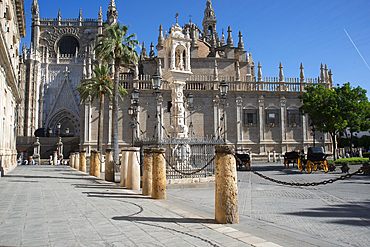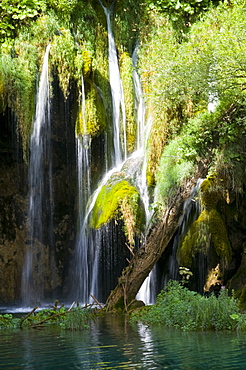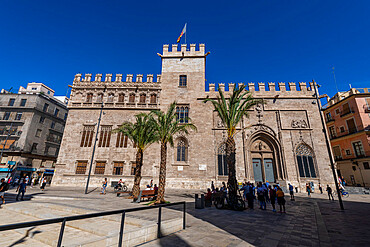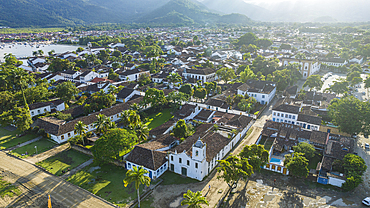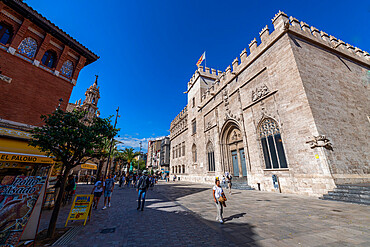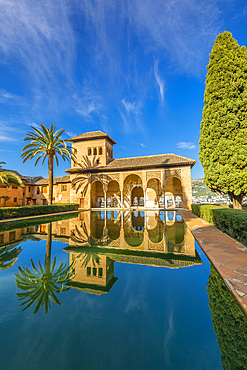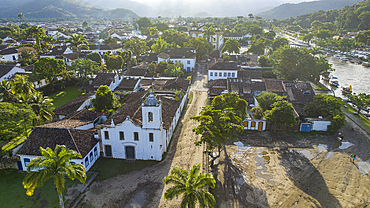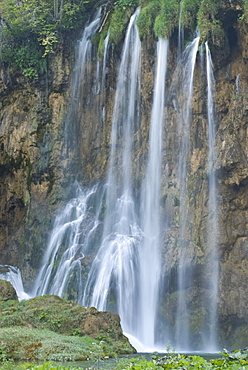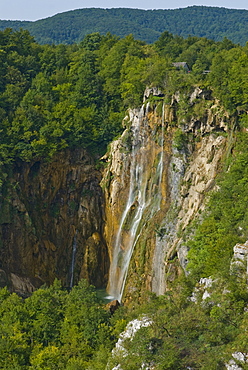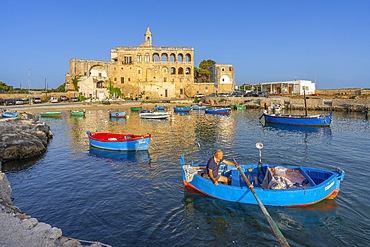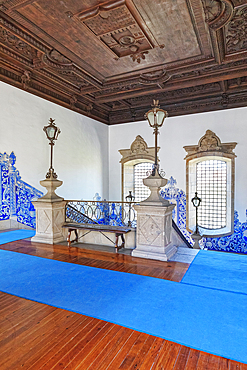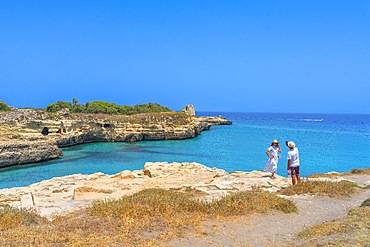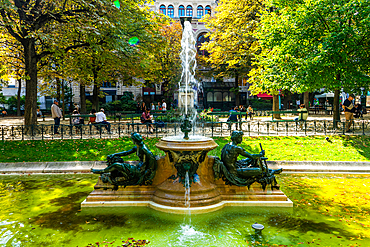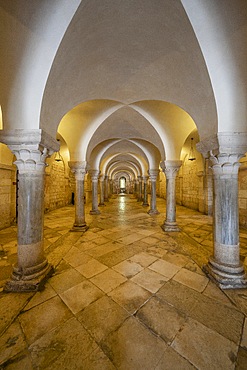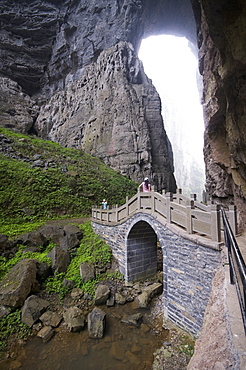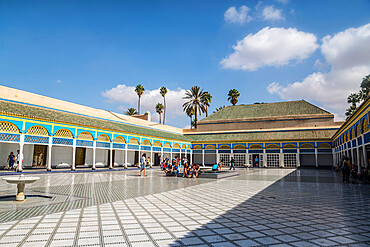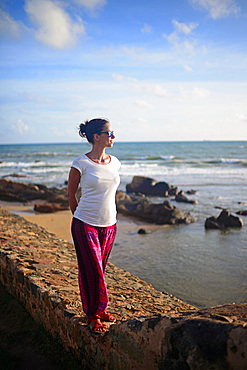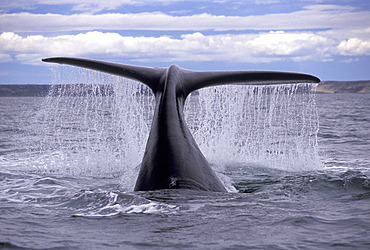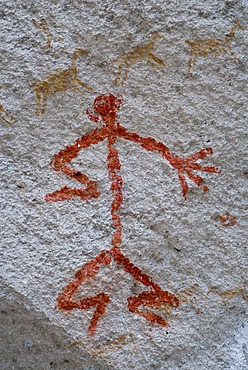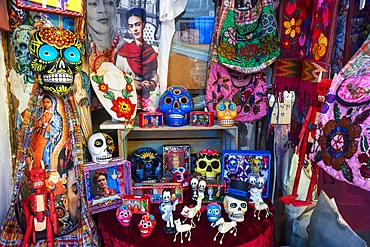Results
« Previous 1 … 15 16 17
1621 results found
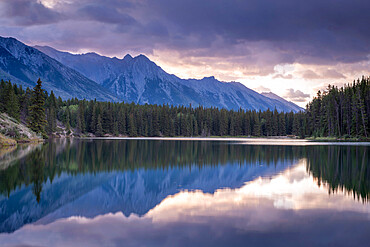
Sunrise over the mountains of the Rockies, reflected in Johnson Lake, Banff National Park, UNESCO World Heritage Site, Alberta, Canada, North America
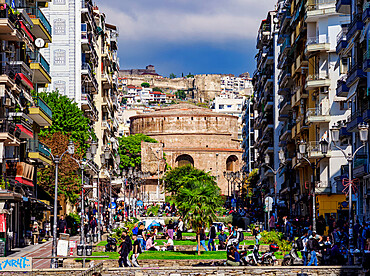
View towards the Rotunda of Galerius, UNESCO World Heritage Site, Thessaloniki, Central Macedonia, Greece, Europe

Lake Crescent, Olympic National Park, UNESCO World Heritage Site, Washington State, United States of America, North America
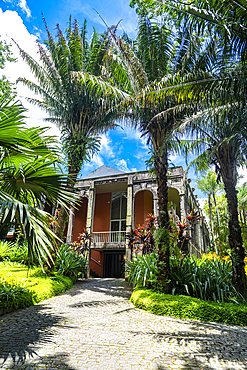
Sitio Roberto Burle Marx site, a landscape garden, UNESCO World Heritage Site, Rio de Janeiro, Brazil, South America
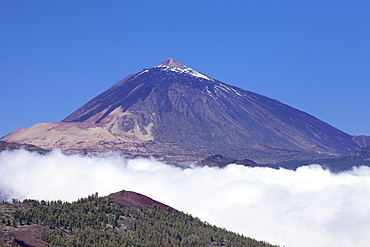
Pico del Teide, National Park Teide, UNESCO World Heritage Natural Site, Tenerife, Canary Islands, Spain, Europe
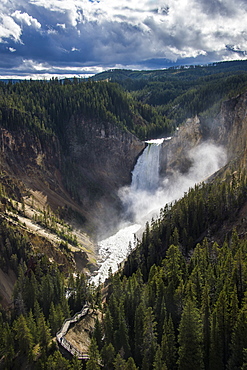
The Upper Falls in the Grand Canyon of Yellowstone in the Yellowstone National Park, UNESCO World Heritage Site, Wyoming, United States of America, North America

The Upper Falls in the Grand Canyon of Yellowstone in the Yellowstone National Park, UNESCO World Heritage Site, Wyoming, United States of America, North America
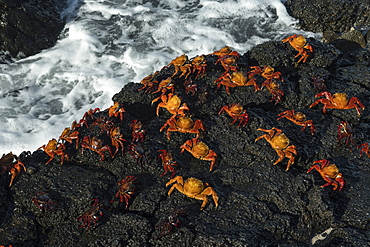
Sally Lightfoot Crab (Grapsus grapsus), Bachas beach, North Seymour Island, Galapagos Islands, UNESCO World Heritage Site, Ecuador, South America
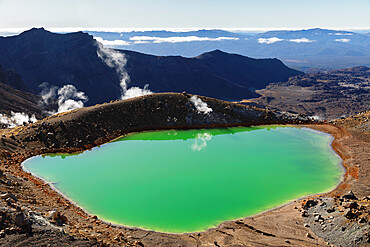
Emerald Lakes, Tongariro Alpine Crossing, Tongariro National Park, UNESCO World Heritage Site, North Island, New Zealand, Pacific
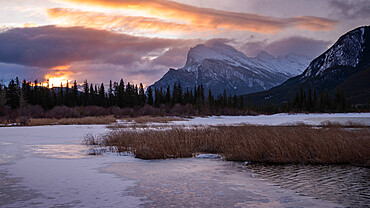
Mount Rundle sunrise with lake ice, Vermillion Lakes, Banff National Park, UNESCO World Heritage Site, Canadian Rockies, Alberta, Canada, North America

View of Monument a la Gent de la Mar near harbour, UNESCO World Heritage Site, Ibiza Town, Eivissa, Balearic Islands, Spain, Mediterranean, Europe
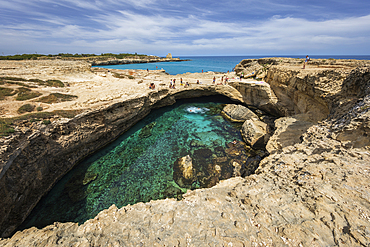
Grotta della Poesia (Poetry Cave) natural pool among karsk formations, Roca archaeological site, near Melendugno, Puglia, Italy, Europe
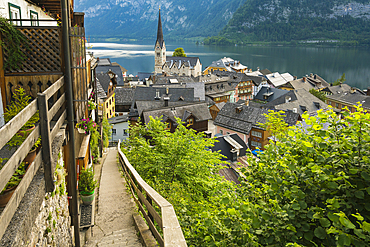
Elevated view of Hallstatt city center dominated by Evangelisches Pfarramt church, Hallstatt, UNESCO World Heritage Site, Austria, Europe
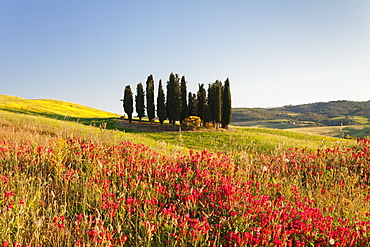
Group of cypress trees and field of flowers, near San Quirico, Val d'Orcia (Orcia Valley), UNESCO World Heritage Site, Siena Province, Tuscany, Italy, Europe
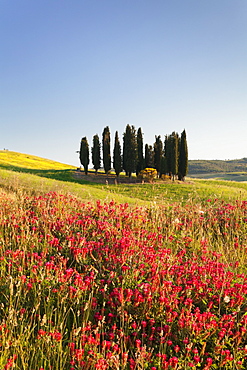
Group of cypress trees and field of flowers, near San Quirico, Val d'Orcia (Orcia Valley), UNESCO World Heritage Site, Siena Province, Tuscany, Italy, Europe
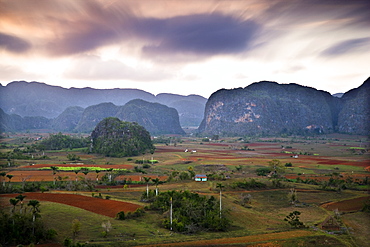
Dusk view across Vinales Valley showing limestone hills known as Mogotes, Vinales, UNESCO World Heritage Site, Cuba, West Indies, Central America
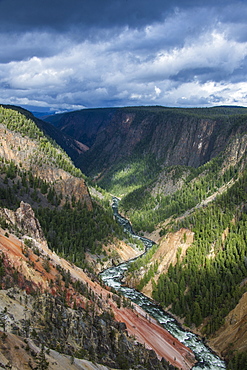
The colourful Grand Canyon of the Yellowstone, Yellowstone National Park, UNESCO World Heritage Site, Wyoming, United States of America, North America
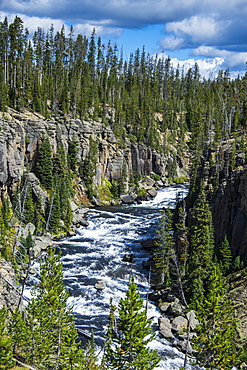
View over the Lewis River, Yellowstone National Park, UNESCO World Heritage Site, Wyoming, United States of America, North America
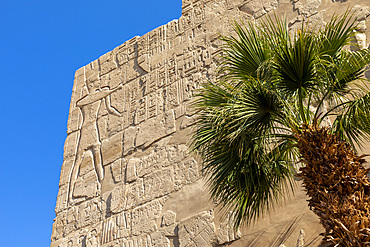
Stone Carvings and Hieroglyphs at Karnak Temple, Luxor, Thebes, UNESCO World Heritage Site, Egypt, North Africa, Africa

Elevated view of harbour, UNESCO World Heritage Site, Ibiza Town, Eivissa, Balearic Islands, Spain, Mediterranean, Europe
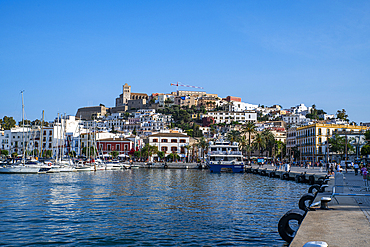
The old town of Ibiza with its castle seen from the harbor, UNESCO World Heritage Site, Ibiza, Balearic Islands, Spain, Mediterranean, Europe
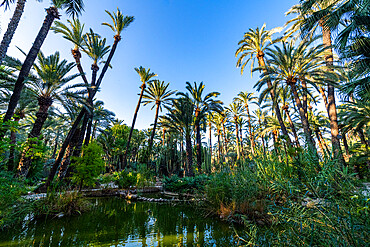
Palm trees, Palmeral (Palm Grove) of Elche, UNESCO World Heritage Site, Alicante, Valencia, Spain, Europe
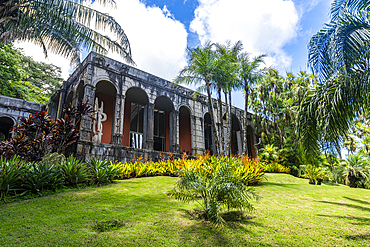
Sitio Roberto Burle Marx site, a landscape garden, UNESCO World Heritage Site, Rio de Janeiro, Brazil, South America
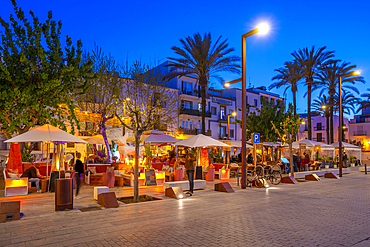
View of restaurants and bars near harbour at dusk, UNESCO World Heritage Site, Ibiza Town, Eivissa, Balearic Islands, Spain, Mediterranean, Europe
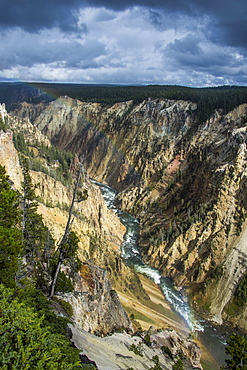
The colourful Grand Canyon of the Yellowstone, Yellowstone National Park, UNESCO World Heritage Site, Wyoming, United States of America, North America
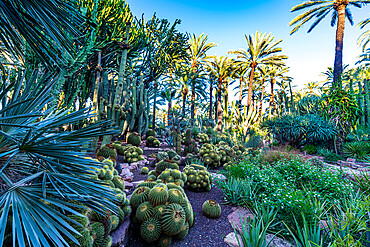
Cactus garden, Palm trees, Palmeral (Palm Grove) of Elche, UNESCO World Heritage Site, Alicante, Valencia, Spain, Europe
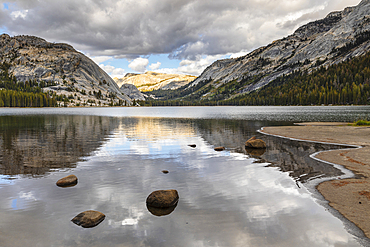
Tenaya Lake, Yosemite National Park, UNESCO World Heritage Site, California, United States of America, North America
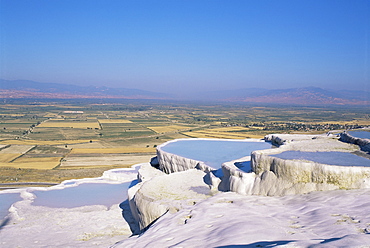
Natural spring, Pamukkale, UNESCO World Heritage Site, Egee region, Anatolia, Turkey, Asia Minor, Asia
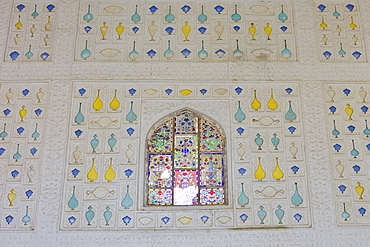
Frescoes in natural pigments at Sukh Mandir Diwan-I-Khas Pleasure Palace at The Amber Fort in Jaipur, Rajasthan, India
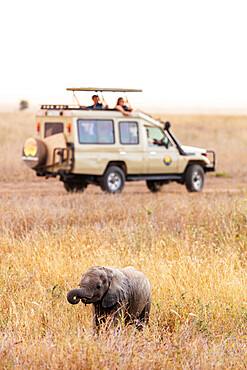
Tourists on game drive watching a baby African elephant (Loxodonta africana), Serengeti National Park, UNESCO World Heritage Site, Tanzania, East Africa, Africa
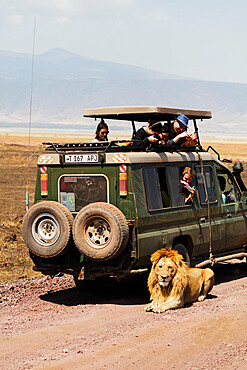
Tourists on a game drive watching a lion (Panthera Leo), Ngorongoro Crater Conservation Area, UNESCO World Heritage Site, Tanzania, East Africa, Africa
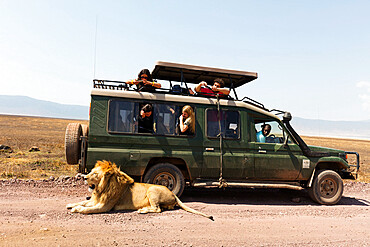
Tourists on a game drive watching a lion (Panthera leo), Ngorongoro Crater Conservation Area, UNESCO World Heritage Site, Tanzania, East Africa, Africa
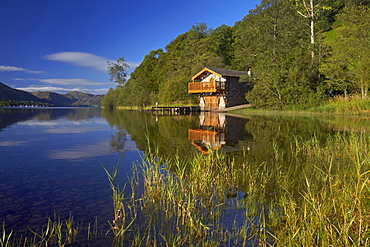
The Duke of Portland boathouse on the shore of Ullswater, Lake District National Park, UNESCO World Heritage Site, Cumbria, England, United Kingdom, Europe
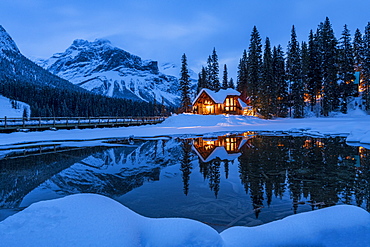
Cilantro on the Lake at Emerald Lake in winter, Emerald Lake, Yoho National Park, UNESCO World Heritage Site, British Columbia, Canadian Rockies, Canada, North America
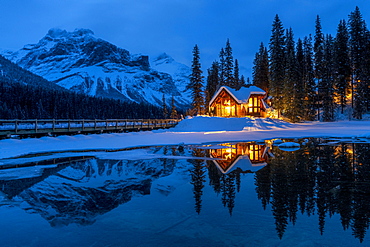
Cilantro on the Lake at Emerald Lake in winter, Emerald Lake, Yoho National Park, UNESCO World Heritage Site, British Columbia, Canadian Rockies, Canada, North America

Cilantro on the Lake lodge, Emerald Lake in winter, Emerald Lake, Yoho National Park, UNESCO World Heritage Site, British Columbia, Canada, North America
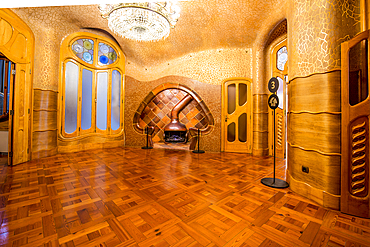
Interior of Casa Batllo, modernism design by Antoni Gaudi, UNESCO World Heritage Site, old town, Barcelona, Catalonia, Spain, Europe
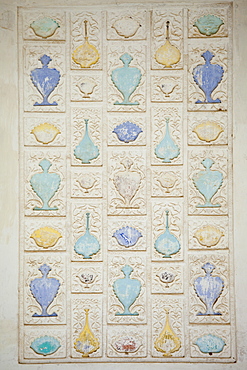
Frescoes in natural pigments at Sukh Mandir Diwan-I-Khas Pleasure Palace at The Amber Fort in Jaipur, Rajasthan, India
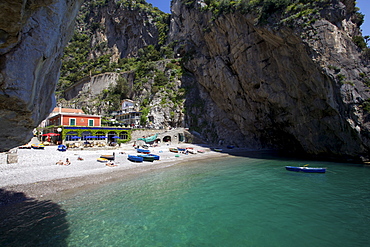
The small natural harbour of Furore on the Amalfi Coast, UNESCO World Heritage Site, Campania, Italy, Europe

A fracking truck next to a site being fracked near Wasco in California's Central Valley, USA. Fracking for natural gas and oil, has reduced energy prices in the US, but fracking is a water hungry industry, that competes directly with the agricultural sector for water. After a 4 year long drought water is running out. Fracking also contaminates ground water supplies from all the chemicals that are pumped underground to frack the fossil fuel bearing rocks.
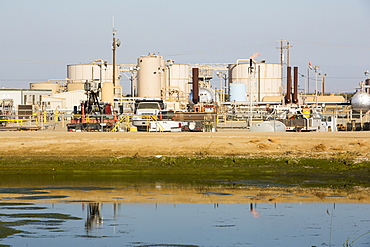
A fracking site being fracked near Wasco in California's Central Valley, USA. Fracking for natural gas and oil, has reduced energy prices in the US, but fracking is a water hungry industry, that competes directly with the agricultural sector for water. After a 4 year long drought water is running out. Fracking also contaminates ground water supplies from all the chemicals that are pumped underground to frack the fossil fuel bearing rocks.
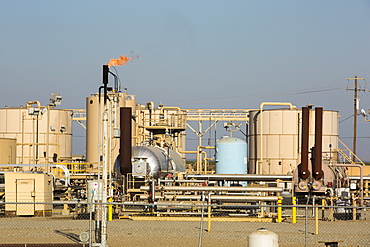
A fracking site being fracked near Wasco in California's Central Valley, USA. Fracking for natural gas and oil, has reduced energy prices in the US, but fracking is a water hungry industry, that competes directly with the agricultural sector for water. After a 4 year long drought water is running out. Fracking also contaminates ground water supplies from all the chemicals that are pumped underground to frack the fossil fuel bearing rocks.
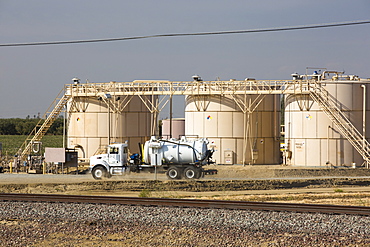
A fracking site being fracked near Wasco in California's Central Valley, USA. Fracking for natural gas and oil, has reduced energy prices in the US, but fracking is a water hungry industry, that competes directly with the agricultural sector for water. After a 4 year long drought water is running out. Fracking also contaminates ground water supplies from all the chemicals that are pumped underground to frack the fossil fuel bearing rocks.
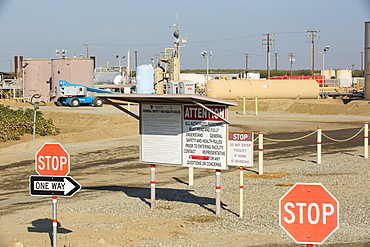
A fracking truck on a site being fracked near Wasco in California's Central Valley, USA. Fracking for natural gas and oil, has reduced energy prices in the US, but fracking is a water hungry industry, that competes directly with the agricultural sector for water. After a 4 year long drought water is running out. Fracking also contaminates ground water supplies from all the chemicals that are pumped underground to frack the fossil fuel bearing rocks.

A fracking site being fracked near Wasco in California's Central Valley, USA, next to a farmers Cotton crop. Fracking for natural gas and oil, has reduced energy prices in the US, but fracking is a water hungry industry, that competes directly with the agricultural sector for water. After a 4 year long drought water is running out. Fracking also contaminates ground water supplies from all the chemicals that are pumped underground to frack the fossil fuel bearing rocks.
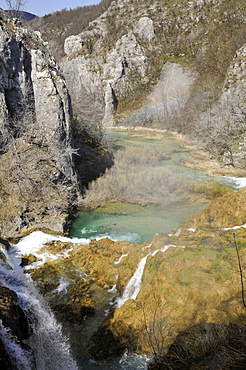
Waterfalls, cliffs and natural spring water pool, Plitvice Jezera National Park, UNESCO World Heritage Site, Croatia, Europe
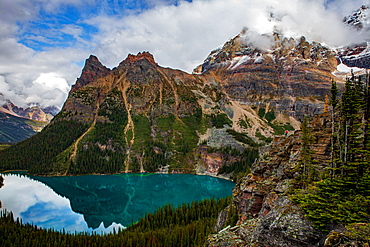
Lake O'Hara, and man looking over the edge on the far right side of the cliff, Yoho National Park, UNESCO World Heritage Site, British Columbia, Canada, North America
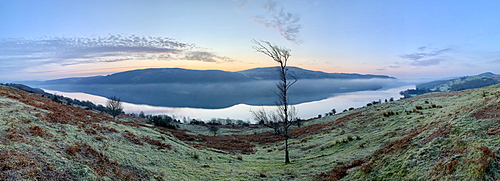
Coniston with rolling mist, Lake District National Park, UNESCO World Heritage Site, Cumbria, England, United Kingdom, Europe
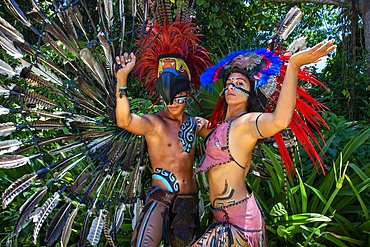
Mexican aztec dress gods at Grand Palladium White Sand Resort and Spa in Riviera Maya, Yucatan Peninsula, Quintana Roo, Caribbean Coast, Mexico.
Aztec clothing was generally loose fitting and did not completely cover the body. When the Spanish arrived in Mexico, the people were surprised to see them in their full armour, with only their faces exposed.
Aztec clothes were generally made of cotton (which was imported) or ayate fiber, made from the Maguey Cactus (also called the Century Plant or American Aloe). Women would weave the fibers into clothing, a task girls were taught as young teenagers. Because of their vast trading network, the Aztecs were able to make use of a beautiful array of dyes, creating the brilliant
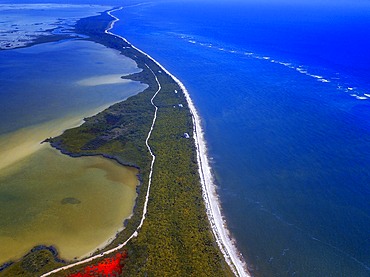
Aerial view of Punta Allen Sian Ka'an Reserve, Yucatan Peninsula, Mexico. Red lagoon near Boca Paila Bridge.
In the language of the Mayan peoples who once inhabited this region, Sian Ka'an means Origin of the Sky. Located on the east coast of the Yucatán peninsula, this biosphere reserve contains tropical forests, mangroves and marshes, as well as a large marine section intersected by a barrier reef. It provides a habitat for a remarkably rich flora and a fauna comprising more than 300 species of birds, as well as a large number of the region's characteristic terrestrial vertebrates, which cohabit in the diverse environment formed by its complex hydrological system.
Along its roughly 120 kilometres of coastline, the property covers over 400,000 hectares of land ranging from sea level to only ten m.a.s.l. The property boasts diverse tropical forests, palm savannah, one of the most pristine wetlands in the region, lagoons, extensive mangrove stands, as well as sandy beaches and dunes. The 120,000 hectares of marine area protect a valuable part of the Mesoamerican Barrier Reef and seagrass beds in the shallow bays. The lush green of the forests and the many shades of blue of the lagoons and the Caribbean Sea under a wide sky offer fascinating visual impressions.
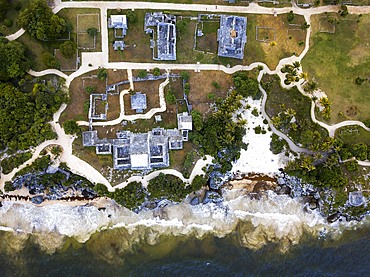
Aerial views of El Castillo and the Ruins of the Mayan temple grounds at Tulum, Quintana Roo, Yucatan, Mexico. Tulum is the site of a pre-Columbian Mayan walled city which served as a major port for Coba, in the Mexican state of Quintana Roo. The ruins are situated on 12 meter 39 ft tall cliffs along the east coast of the Yucatán Peninsula on the Caribbean Sea in the state of Quintana Roo, Mexico. Tulum was one of the last cities built and inhabited by the Maya; it was at its height between the 13th and 15th centuries and managed to survive about 70 years after the Spanish began occupying Mexico. Old World diseases brought by the Spanish settlers appear to have resulted in very high fatalities, disrupting the society, and eventually causing the city to be abandoned.
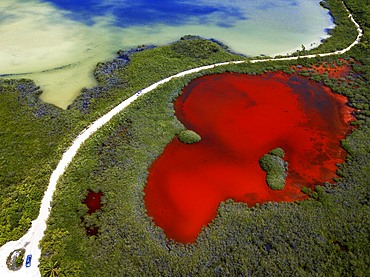
Aerial view of Punta Allen Sian Ka'an Reserve, Yucatan Peninsula, Mexico. Red lagoon near Boca Paila Bridge.
In the language of the Mayan peoples who once inhabited this region, Sian Ka'an means Origin of the Sky. Located on the east coast of the Yucatán peninsula, this biosphere reserve contains tropical forests, mangroves and marshes, as well as a large marine section intersected by a barrier reef. It provides a habitat for a remarkably rich flora and a fauna comprising more than 300 species of birds, as well as a large number of the region's characteristic terrestrial vertebrates, which cohabit in the diverse environment formed by its complex hydrological system.
Along its roughly 120 kilometres of coastline, the property covers over 400,000 hectares of land ranging from sea level to only ten m.a.s.l. The property boasts diverse tropical forests, palm savannah, one of the most pristine wetlands in the region, lagoons, extensive mangrove stands, as well as sandy beaches and dunes. The 120,000 hectares of marine area protect a valuable part of the Mesoamerican Barrier Reef and seagrass beds in the shallow bays. The lush green of the forests and the many shades of blue of the lagoons and the Caribbean Sea under a wide sky offer fascinating visual impressions.

Aerial views of El Castillo and the Ruins of the Mayan temple grounds at Tulum, Quintana Roo, Yucatan, Mexico. Tulum is the site of a pre-Columbian Mayan walled city which served as a major port for Coba, in the Mexican state of Quintana Roo. The ruins are situated on 12 meter 39 ft tall cliffs along the east coast of the Yucatán Peninsula on the Caribbean Sea in the state of Quintana Roo, Mexico. Tulum was one of the last cities built and inhabited by the Maya; it was at its height between the 13th and 15th centuries and managed to survive about 70 years after the Spanish began occupying Mexico. Old World diseases brought by the Spanish settlers appear to have resulted in very high fatalities, disrupting the society, and eventually causing the city to be abandoned.

Swimming at Cenote Ik Kil in Yucatan, Mexico, a natural pit, or sinkhole near Chichen Itza. Yucatan Peninsula, Quintana Roo, Mexico. Ik Kil was sacred to the Mayans who used this cenote for both relaxation and ritual services centuries ago.
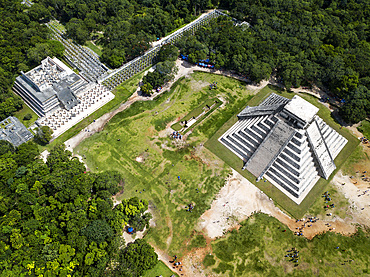
Aerial view of Mayan Ruin of Chichen Itza Archaeological Site Yucatan Peninsula, Quintana Roo, Caribbean Coast, Mexico
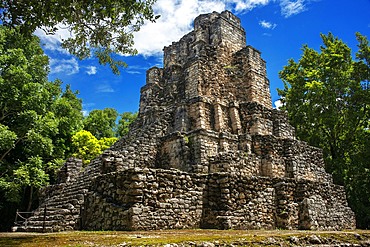
Estructura 8I-13 El Castillo at Chunyaxche Muyil Maya ruins, rainforest near Tulum, Yucatan Peninsula, Quintana Roo, Mexico
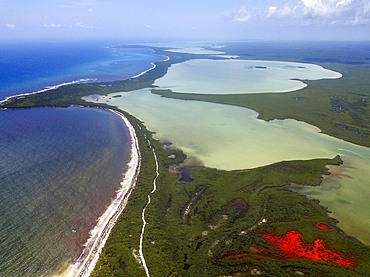
Aerial view of Punta Allen Sian Ka'an Reserve, Yucatan Peninsula, Mexico. Red lagoon near Boca Paila Bridge.
In the language of the Mayan peoples who once inhabited this region, Sian Ka'an means Origin of the Sky. Located on the east coast of the Yucatán peninsula, this biosphere reserve contains tropical forests, mangroves and marshes, as well as a large marine section intersected by a barrier reef. It provides a habitat for a remarkably rich flora and a fauna comprising more than 300 species of birds, as well as a large number of the region's characteristic terrestrial vertebrates, which cohabit in the diverse environment formed by its complex hydrological system.
Along its roughly 120 kilometres of coastline, the property covers over 400,000 hectares of land ranging from sea level to only ten m.a.s.l. The property boasts diverse tropical forests, palm savannah, one of the most pristine wetlands in the region, lagoons, extensive mangrove stands, as well as sandy beaches and dunes. The 120,000 hectares of marine area protect a valuable part of the Mesoamerican Barrier Reef and seagrass beds in the shallow bays. The lush green of the forests and the many shades of blue of the lagoons and the Caribbean Sea under a wide sky offer fascinating visual impressions.
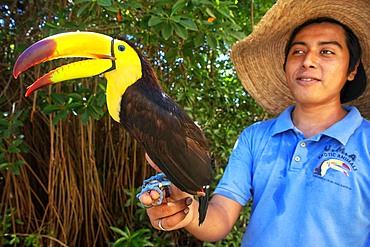
A Mexican staff member holds a tucan at Grand Palladium White Sand Resort and Spa in Riviera Maya, Yucatan Peninsula, Quintana Roo, Caribbean Coast, Mexico
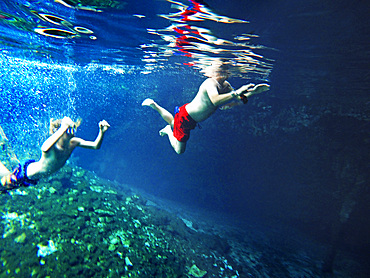
Gran Cenote de Tulum in Yucatan Peninsula, Quintana Roo, Mexico. There are thousands of cenotes dotted all over Mexico���s Yucatan Peninsula, and their existence is as much a defining characteristic of the region as is the distinct geological feature from which they result. Once revered by the ancient Mayans as sacred wells, they are now magnets for tourists, adventurers, and explorers alike.

Mexican aztec dress gods at Grand Palladium White Sand Resort and Spa in Riviera Maya, Yucatan Peninsula, Quintana Roo, Caribbean Coast, Mexico.
Aztec clothing was generally loose fitting and did not completely cover the body. When the Spanish arrived in Mexico, the people were surprised to see them in their full armour, with only their faces exposed.
Aztec clothes were generally made of cotton (which was imported) or ayate fiber, made from the Maguey Cactus (also called the Century Plant or American Aloe). Women would weave the fibers into clothing, a task girls were taught as young teenagers. Because of their vast trading network, the Aztecs were able to make use of a beautiful array of dyes, creating the brilliant
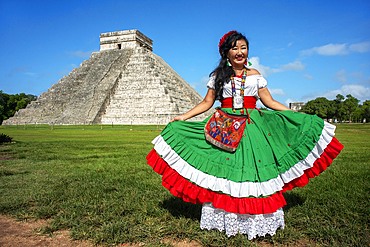
El Castillo, The Pyramid of Kukulkán, is the Most Popular Building in the UNESCO Mayan Ruin of Chichen Itza Archaeological Site Yucatan Peninsula, Quintana Roo, Caribbean Coast, Mexico. Asian tour leder dressed in a maya style.
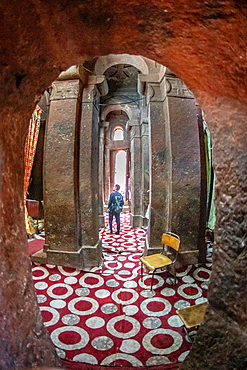
Rock hewn monolithic church of Bet Golgotha (House of Golgotha Mikael), known for its arts and said to contain the tomb of King Lalibela) in Lalibela, Ethiopia
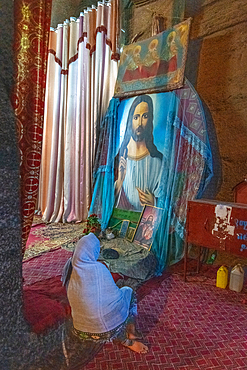
A woman sits in front of a painting of jesus Christ inside the church of Bet Medhane Alem (Church of the World Savior) in Lalibela, Ethiopia

Rock hewn monolithic church of Bet Golgotha (House of Golgotha Mikael), known for its arts and said to contain the tomb of King Lalibela) in Lalibela, Ethiopia
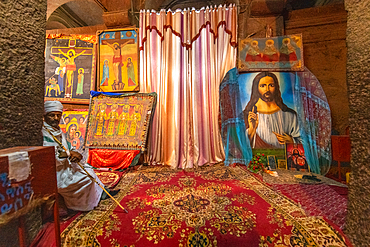
A man sits near a collection of Christian artwork within the church of Bet Medhane Alem (Church of the World Savior) in Lalibela, Ethiopia
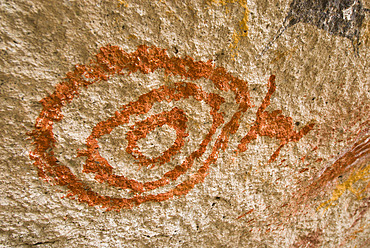
Cueva de las Manos del Rio Pinturas, Cave of the Hands, Patagonia, Province of Santa Cruz, Argentina
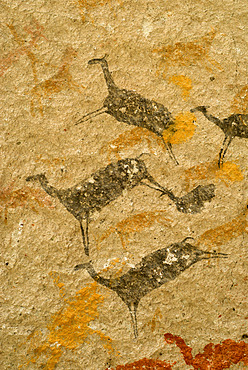
Cueva de las Manos del Rio Pinturas, Cave of the Hands, Patagonia, Province of Santa Cruz, Argentina
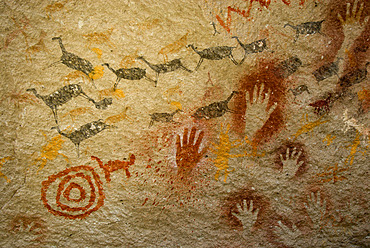
Cueva de las Manos del Rio Pinturas, Cave of the Hands, Patagonia, Province of Santa Cruz, Argentina
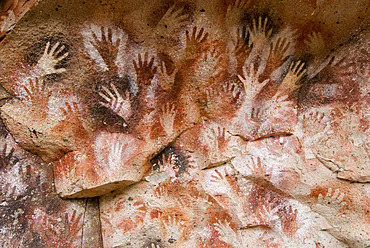
Cueva de las Manos del Rio Pinturas, Cave of the Hands, Patagonia, Province of Santa Cruz, Argentina

Cueva de las Manos del Rio Pinturas, Cave of the Hands, Patagonia, Province of Santa Cruz, Argentina
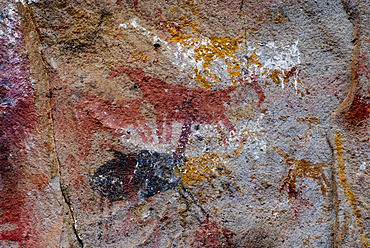
Cueva de las Manos del Rio Pinturas, Cave of the Hands, Patagonia, Province of Santa Cruz, Argentina
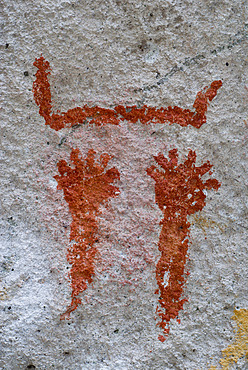
Cueva de las Manos del Rio Pinturas, Cave of the Hands, Patagonia, Province of Santa Cruz, Argentina
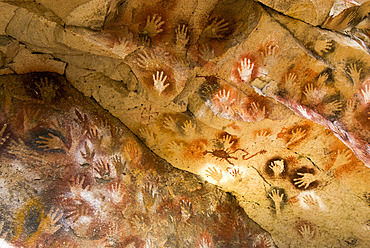
Cueva de las Manos del Rio Pinturas, Cave of the Hands, Patagonia, Province of Santa Cruz, Argentina
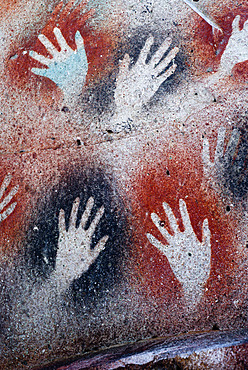
Cueva de las Manos del Rio Pinturas, Cave of the Hands, Patagonia, Province of Santa Cruz, Argentina
